Iceland: Day 10 - The Birds of Hrísey
July 4, 2004
There are about 40 species of nesting birds in Hrísey. Some number only a few individuals, others are thousands. Among them are: arctic skua, greylag goose, curlew, common snipe, redshank, oyster catcher, wheatear, godwit, ptarmigan, golden plover, dunlin, redwing, arctic tern, black-headed gull, common gull, herring gull, great black-backed gull, fulmar, black guillemot, snow bunting, meadow pipit, eiderduck, wagtail, raven, ringed plover and redpoll. By the west ponds of the island's highest point there is a large population of ducks including teal, mallard, pintail, widgeon, merganser and tufted duck.
When we got back to the mainland we camped close to Dalvik for the night on a little dirt road next to a protected bird area. When we got out to stretch our legs we were immediately attacked by terns, so we stuck to playing Yahtzee in the car before going to bed. From the car we also noticed several other birds like the ringed plover and a little puffball which we thought must be a baby chick until we saw 2 even smaller puffballs scurry over to the first one and hide under it!
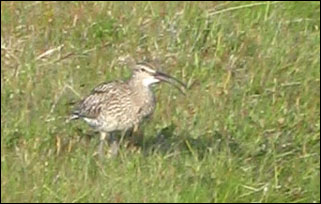
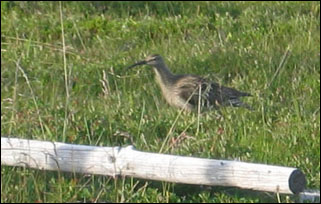
A curlew (Icelandic: Spoi). Numenius Phaeopus. The scientific term suggests "the bird with greyish brown legs and a bill shaped like the crescent moon." This little bird greeted as and accompanied us on our hike with its typical echoing trill. More often this bird seems to be referred to as a whimbrel.

A Golden Plover. In 2002 Eurpeans voted Iceland's Golden Plover as their favourite in the Birdeurovision song contest.
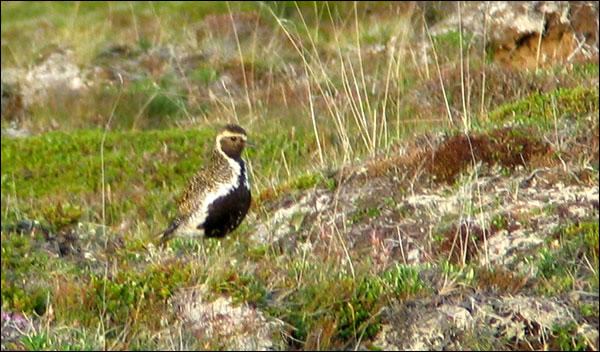
A Golden Plover.
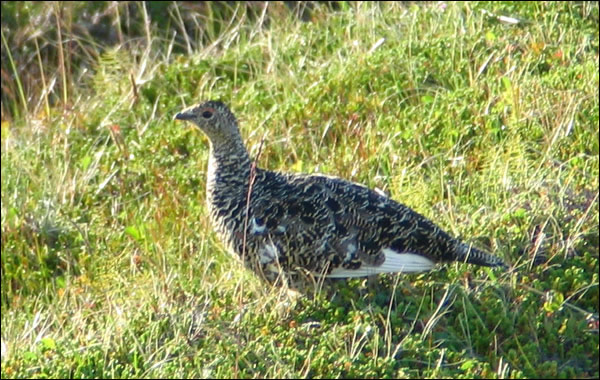
The Ptarmigan (Icelandic: Rjúpa)
Lagopus mutus "The silent game bird with a rabbit's feet"
Since 1960, Hrísey has become known as a special sanctuary for ptarmigans. The males arrive in March and select their territory and about 2 weeks later the females turn up. Over a 10 year period, populations can fluctuate between 100 and 300 males in possession of territories in Hrísey. The breeding season is in the final days of May and the 10-11 eggs hatch in about 20-23 days. In autumn flocks of ptarmigan descend on the village where they use gardens for shelter and protections from falcons that visit the island every day. In the winter the ptarmigans head for the mountains on the mainland.
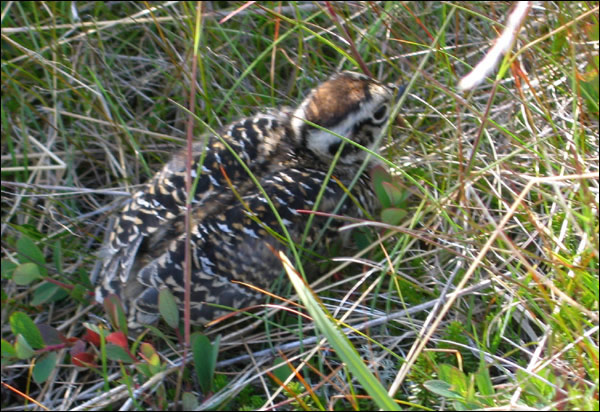
A baby ptarmigan.
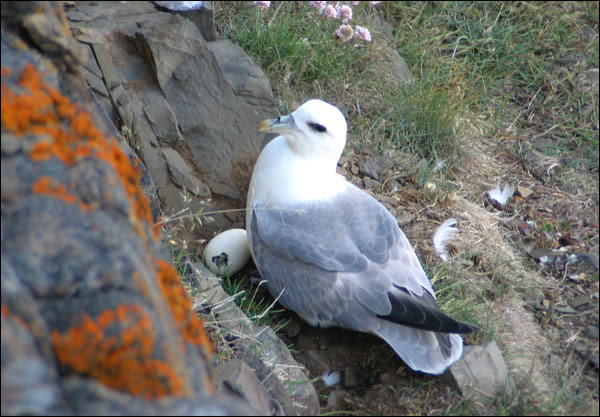
Common Gull (Icelandic: Stormmáfur)
Lárus canus. "The greyish white, greedy seabird."
The first nest of a common gull found in Iceland was near Akureyri in 1939. In 1972 a lone gull was spotted flying over Hrísey, but only after 1980 did the common gull start breeding on the island.
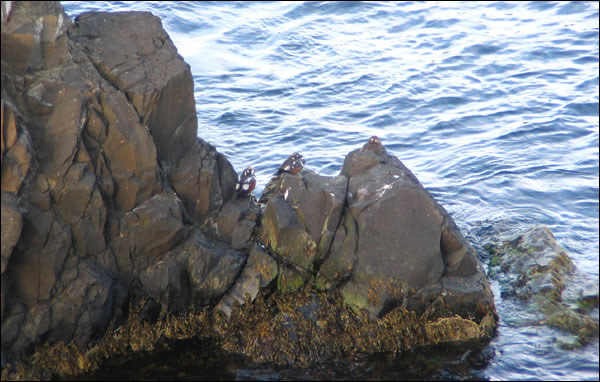
Harlequin ducks hanging out on the rocks
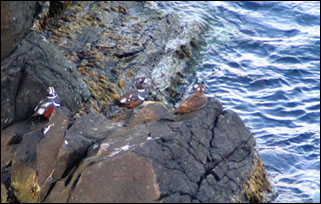
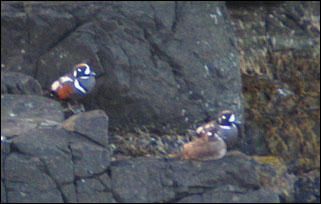
Close ups of Harlequin ducks
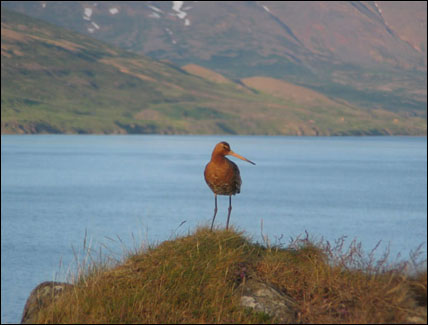
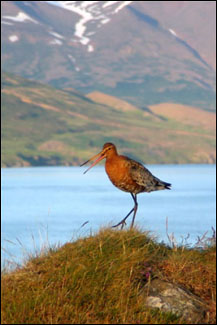
The godwit (Icelandic: Jaðrakan)
Limosa limosa "mudbird"
The first godwit was spotted in Hrísey in 1970, and the first nest here was discovered in 1974. Its call is loud and shrill, especially during flight, but on the ground it adopts another mode of expression characterised by rapid, chattering noises. By September, most of the birds have left for their winter habitats in France, Portugal, Ireland and Scotland.
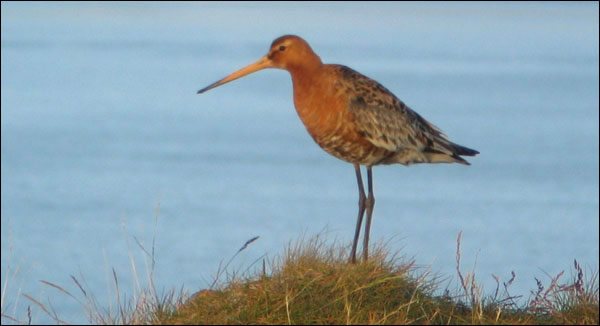
This godwit was a real poser!
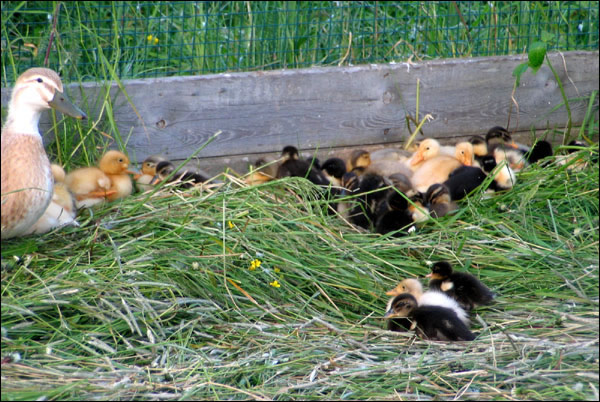
Some domestic ducks in a local garden.
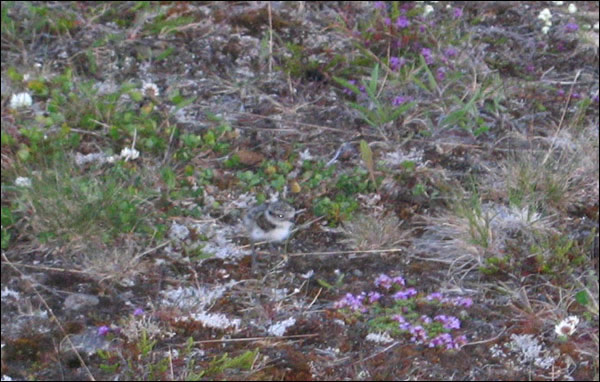
The tiny 'puffball' bird and its even tinier puffball chicks were almost impossible to spot.
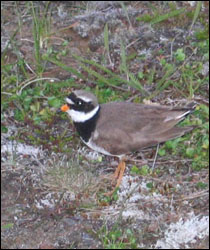

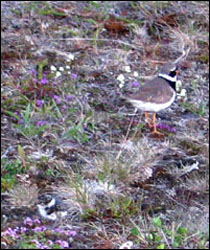
A little ringed plover (charadrius hiaticula) bids us good night.
The following birds we did not get pictures of:
The Common Snipe (Icelandic: Hrossagaukur)
Gallinago gallinago. The scientific term could be translated as "the bird that resembles a hen". The snipe is shy and reserved. Its most telling noise is the neighing whistle produced by the rush of air through its tail feathers during a steep dive.
The Arctic Tern (Icelandic: Kría)
Sterna paradisaea. "The waitress from Paradise"
The arctic tern is a true native of the northern regions, whose nesting grounds have been spotted as close to the North Pole as 720 km. In 1994, 25 thousand nesting pairs were counted on Hrísey. Their winter habitat is the area around Antarctica and they can cover nearly 40,000 km annually. Their designated private territory is a small patch of ground around their nest and all intrusions into this area are met with the most determined defensive action. They lay 1-3 mossy green or light brown eggs in a nest that is only a shallow indentation into the top of a tussock.
[ Hrísey ]
[ day 10 ]